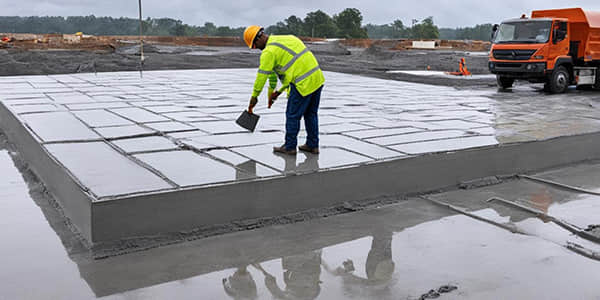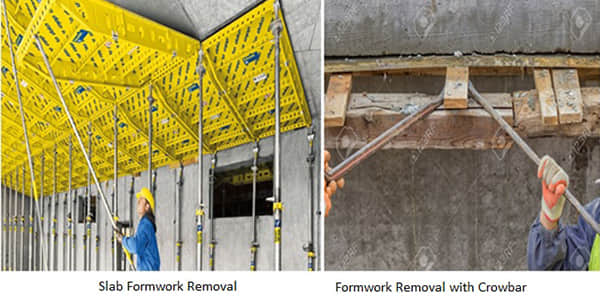Slabs, Beams, Columns: When To Remove Concrete Formwork
Mar 26, 2025Finding the appropriate time for removing the formwork is crucial for concrete strength, avoiding costly mistakes, and keeping your job on schedule. In this blog post, we’ll take you through all the information necessary for removing concrete formwork in a way that is informed—from what curing is to things to avoid. This blog will help anyone from DIY-ers to contractors.
Concrete formwork are used to hold concrete structures in place, and they can be temporary or permanent. These molds may be made of wood, steel, and plastic, depending on the project. Formwork gives concrete its shape, whether it is a wall, slab, or beam.
Meanwhile, curing is the process in which concrete is kept moist and at the proper temperature so that it can harden properly. It isn’t simply allowing it to dry, but giving time for the concrete to build strength and durability from the chemical reaction called hydration. If proper curing does not take place, concrete can crack, weaken in strength, or fail altogether. Knowing about curing is the basis for understanding when formwork can be removed.
Curing does not follow a preset schedule. How long it will take depends on a multitude of factors, but here's the general idea: concrete typically reaches about 70% of its ultimate strength in 7 days, and continues to gain strength for another few weeks, reaching a key milestone at 28 days. That 28-day mark is often used as the measure of "full curing" for standard mixtures, although it can continue to gain strength beyond 28 days.Nevertheless, when removing formwork, waiting for full curing is not required. Concrete only needs enough strength to support itself.

1. Type of Concrete Mix
2. Ambient Temperature
3. Humidity Levels
4. Size and Type of Structure
5. Load Conditions
These factors don’t just affect curing—they dictate when your formwork can safely come down. Ignore them, and you’re rolling the dice on your project’s success.

So, when’s the magic moment? It depends, but here are some industry-standard guidelines:
Vertical Formwork (Walls, Columns)
Horizontal Formwork (Slabs, Beams)
These are just starting points. Always check your project’s specifications or consult a structural engineer. Testing the concrete’s strength—via methods like cylinder tests—can also pinpoint the perfect time. Rushing this step isn’t worth the risk.
Pulling formwork off too soon is a recipe for disaster. Here’s what could go wrong:
Structural Damage
Surface Defects
Safety Hazards
The takeaway? Patience pays off. Let the concrete do its thing before you strip away its support.
Even seasoned pros can slip up. Here are the big no-nos to steer clear of:
1. Ignoring Curing Conditions
2. Skipping Project Specs
3. Rushing the Timeline
4. Poor Post-Removal Support
Avoid these, and you’ll sidestep headaches—and expensive fixes—down the road.
Formwork’s off—can you start using the concrete right away? Not so fast. Here’s the deal:
Walking
Driving
The concrete’s still curing even after formwork removal, so don’t push it too hard too soon. Check your mix details and load requirements to be sure.
Deciding when to remove concrete formwork isn’t guesswork—it’s a balance of science, timing, and good judgment. By understanding how concrete cures, factoring in variables like temperature and mix type, and avoiding common mistakes, you can ensure your project stands strong. Whether it’s a small patio or a towering wall, the rules are the same: let the concrete build enough strength to stand alone before pulling the forms.
For the best results, lean on project specs, test when possible, and don’t hesitate to bring in an expert. Get this right, and you’ll have a durable, safe structure—and maybe even a top spot on Google for “when to remove concrete formwork.” Happy building!
How to safely remove concrete formwork?
What should I do if cracks appear on the concrete surface after removing the formwork?
How To Build Concrete Formwork? ---- Reddit
Design of Concrete Formwork ---- UpCodes